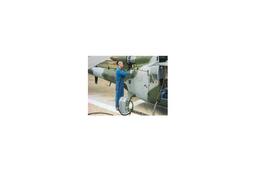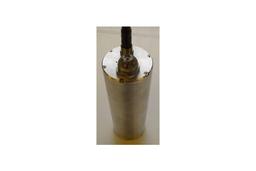


Marine and weather measuring equipment and Water quality automatic measuring equipment manufacturer
Leg Mating Units (LMUs) are used in the float-over process. in this process, a topside structure is installed onto a substructure (e.g jacket). The topside structure is transported to the site on a barge. after the barge is positioned such that the topside structure is aligned with the substructure, the barge is slowly submerged.
During this process, the load needs to be transferred from the barge to the substructure in a controlled manner using LMUs. LMUs consist of a steel structure incorporating elastomer elements to achieve a specified spring rate. The elastomer elements are designed to take up the static load of the topside structure as well as the dynamic load of the topside due to wave conditions. The vertical elastomer pads are normally complimented with side pads to cater for any horizontal force during the mating operation. The specified spring rate depends on the expected loads and movements.
The LMUs are installed on the substructure and will be the contact point between the topside and the substructure. Any wave movement is absorbed by the elastomer elements of the LMUs. After the installlation is completed, the topside structure is welded to the substructure. Sometimes, the design may call for a sand cavity to relieve the compressive forces in the elastomer after welding.
All LMU pads will be tested to verify their load deformation behaviours before site installation. We have the necessary testing facilities to run the full range of tests to qualify the LMU elements.
Module support bearings for FPSO
Wave action results in multidirectional loads between the hull and the topside modules in an FPSO. Our support bearings provide the necessary vibration isolation for the processing modules on the FPSO.
These bearings must be able to resist:
ㆍmovement in six dgrees of freedom
ㆍLarge rotational movements in line with FPSOs longitudinal axis



































